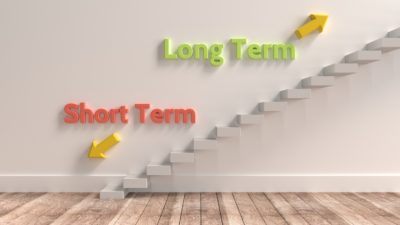Before I decide whether to buy a company’s shares, I always like to look at its return on equity.
This key ratio helps me to understand how successful a company is at generating profits using shareholders’ funds, and often has a strong correlation with dividend payments and share price growth.
Today, I’m going to take a look at FTSE 100 insurer RSA Insurance Group (LSE: RSA) (NASDAQOTH: RSANY.US), to see how attractive it looks on these two measures.
Should you invest £1,000 in Lloyds Banking Group right now?
When investing expert Mark Rogers has a stock tip, it can pay to listen. After all, the flagship Motley Fool Share Advisor newsletter he has run for nearly a decade has provided thousands of paying members with top stock recommendations from the UK and US markets. And right now, Mark thinks there are 6 standout stocks that investors should consider buying. Want to see if Lloyds Banking Group made the list?
Return on equity
The return a company generates on its shareholders’ funds is known as return on equity, or ROE. Return on equity can be calculated by dividing a company’s post-tax profit by its equity (ie, the difference between its total assets and its total liabilities) and is expressed as a percentage.
RSA’s share price has declined by 5% over the last five years, and its dividend was cut by 33% last year. Clearly its profitability has been in decline — has this been reflected in its ROE?
| RSA Insurance Group | 2008 | 2009 | 2010 | 2011 | 2012 | Average |
|---|---|---|---|---|---|---|
| ROE | 16.4% | 13.4% | 9.9% | 11.5% | 9.1% | 12.1% |
With ROE running at 55% of 2008 levels and less than half its 2007 level of 19.3%, RSA has clearly been struggling to generate strong returns in recent years.
However, that’s not entirely surprising, given the falling yields available from government and corporate bonds over the last three years — such bonds comprise 82% of RSA’s portfolio.
How strong are RSA’s finances?
A recognised measure of an insurance company’s financial strength is its Insurance Groups Directive capital coverage ratio. This measures the amount of surplus capital held by an insurance company, in excess of its regulatory requirements.
In the table below, I’ve listed RSA’s net gearing and ROE alongside those of its UK peer, Aviva.
| Company | IGD capital coverage ratio |
5-year average ROE |
|---|---|---|
| Aviva | 173% | 2.0% |
| RSA Insurance Group | 190% | 12.1% |
When calculated on the same basis as for RSA, Aviva’s 5-year average ROE is just 2.0%, considerably lower than the 12.1% average achieved by RSA.
Although Aviva reports much higher ROE figures in its annual reports, these use post-tax operating profit, which excludes many of the exceptional items which are included in the profit figure normally used to calculate ROE.
Is RSA a buy?
RSA’s ROE has fallen in recent years, but its finances have remained more robust than those of Aviva, and RSA’s management expects to deliver return on equity of between 10% and 12% this year.
Despite their recent dividend cut, RSA shares continue to offer a prospective yield of 4.9%, and I believe they could be an attractive buy for both income and long-term growth.
If you already hold RSA’s stock, then you might be interested in learning about five star shares that have been identified by the Fool’s team of analysts as “5 Shares To Retire On“.
I own three of the shares featured in this free report, and I don’t mind admitting they are amongst the most successful investments I’ve ever made.
To find out the identity of these five companies, click here to download your copy of this report now, while it’s still available.
> Roland owns shares in Aviva, but does not own shares in any of the other companies mentioned in this article.







